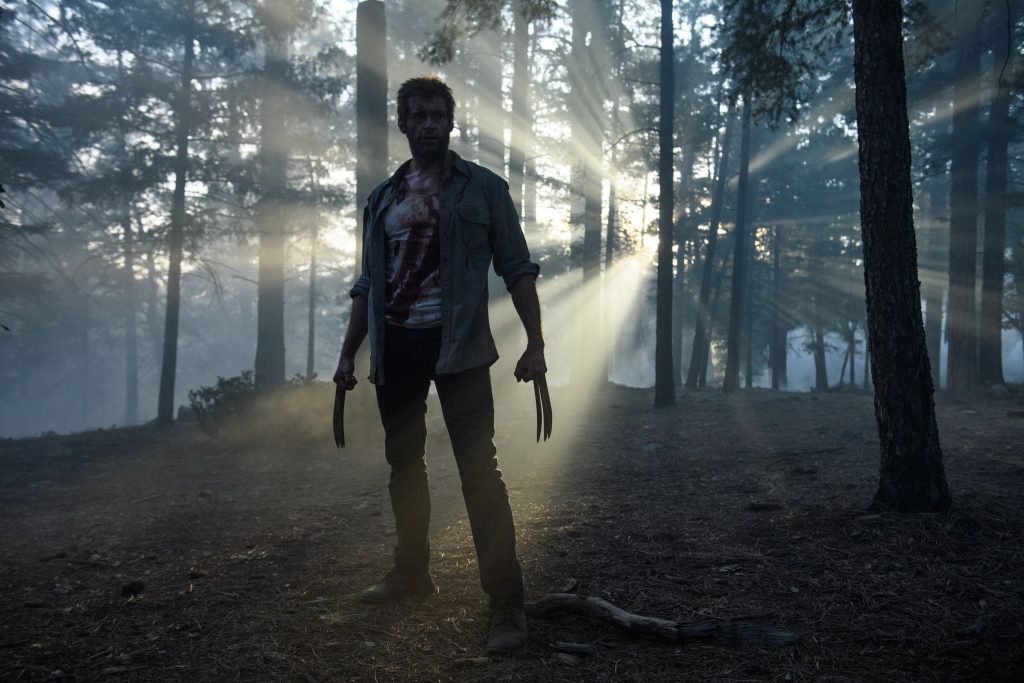A Brand That Sticks, by Esther O’Reilly
6 Apr
James Mangold’s Logan is not the first film to market itself as an “adult” superhero story. It’s just the first to actually tell one. Set aside, for a moment, the slashing (sometimes necessary, sometimes gratuitous) and the swearing (sometimes amusing, sometimes gratuitous). These are secondary to the fact that no superhero film has ever offered such a devastatingly poignant portrayal of what age does to a man’s body and soul.
Hugh Jackman plumbs new depths in this, his last turn as the Wolverine. Haunted, haggard, and perpetually on the verge of a coughing fit, this Logan is a lion in winter, contemplating death sooner rather than later. But what happens when a man who wants to die encounters a child who is very much alive? This premise is so compelling, and the film around it so subtly self-contained, that it has drawn in even viewers with no previous attachment to the character or the franchise.
As time has ravaged the warrior’s body, so it has ravaged the professor’s mind. We first meet a fading Professor X as he wheels himself about and rambles thunderously, Lear-like, bumping into Logan with a petulant “Make way, sir.” Scenes between the two men ache with an intimately painful quality, marked by all the snaps and snarls and gruff tenderness you would expect between a feeble father and a weary son. The difference is that Charles grows more dangerous the feebler he becomes. Like an incontinent old man, he can only apologize helplessly for the seizures that wrack his body even as they shake the earth around him. Yet there are brief moments when we glimpse the great mind as it was. In a film parched for beauty or light of any kind, a moment when he closes his eyes to summon a group of runaway farm horses meekly trotting back is a cup of cool water.
That parched quality makes the film something considerably less than what it could have been. At times, it strives to recall the harsh, scorched storytelling of Cormac McCarthy or Flannery O’Connor. That it succeeds is not a point in its favor. This is a world where innocence is no protection against the wicked, and savage punishment is meted out for mere foolishness. Some narrative choices are forgivable. Others are not.
Nevertheless, a defiant flicker of humanity remains at Logan‘s core. The child, Laura, drives the story as she drives Logan. Newcomer Dafne Keen, speaking two languages and performing her own fight scenes, is such a terrific find one could wish her character was fleshed out even more. Her moments of quiet bonding with Logan are few but memorable–one in particular where she climbs literally into the driver’s seat is unforgettable. By the end, at least for her character, we are convinced that the torch is passing into good hands. The jury is still out on her young companions, who appear in the final act but sadly fail to leave a memorable impression of any kind.
Logan has been called a neo-Western, but while it recalls Unforgiven in tone, much has been made of the fact that the screenplay draws most explicitly on Shane. Some hat tips are subtle (the hired villain’s bionic hand versus Jack Palance’s single black glove), others not. There’s the obligatory angsty Dialogue About Violence, which comes off a bit smarmy and disingenuous in light of the exhilaratingly shot carnage Logan and Laura leave in their wake. As Laura herself astutely points out, these are “bad people” we are dealing with here. We shed no tears when the man comes around for them.
But, in fairness, this distracting disconnect is as old as Shane himself. In the end, as with Shane, there is no doubt on which side of the line Logan falls between hero and anti-hero. Viewers will be glad that this old sheepdog is allowed a redemptive, honorable warrior’s end. That is, if they can stand to march through the film preceding it. For better or worse, the mark it leaves is indelible.




No comments yet